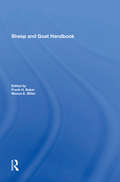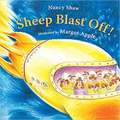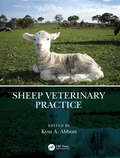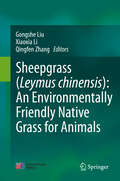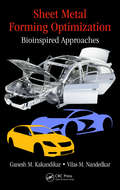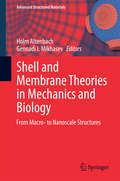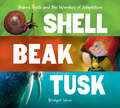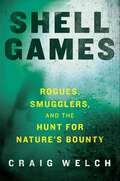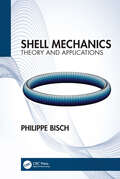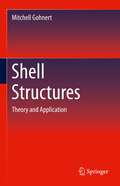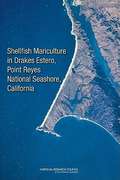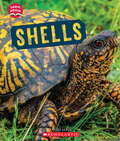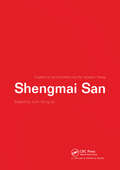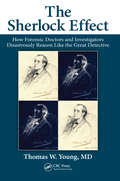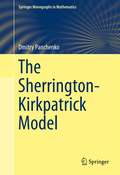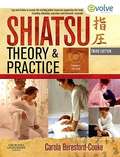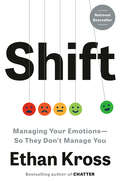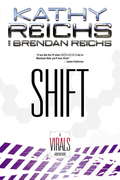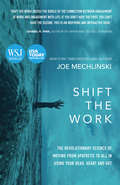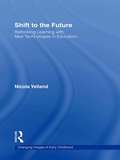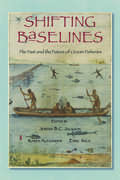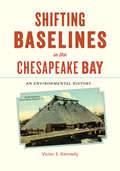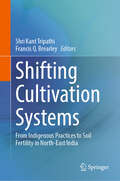- Table View
- List View
Sheep And Goat Handbook, Vol. 4
by Frank H. Baker Mason E. MillerThe Sheep and Goat Handbook includes presentations made at the International Stockmen's School, January 8-13, 1984.The faculty members of the School who authored this fourth volume of the Handbook, along with books on beef cattle, dairy cattle, and horses, are scholars, stockmen, and agribusiness leaders with national and international reputations. The papers are a mixture of technology and practice that present new concepts from the latest research results of experiments in all parts of the world. Relevant information and concepts from many related disciplines are included.
Sheep Blast Off! (Fountas & Pinnell LLI Blue #Level H)
by Nancy ShawWhen a mysterious spacecraft lands in a nearby pasture, the lovable, blundering sheep get in gear for the ride of their lives! Unfortunately, these sheep don’t know the first thing about piloting a spaceship . . . but there may be someone else on board who does! Readers will have a blast with Nancy Shaw’s clever rhymes and Margot Apple’s hilarious illustrations in this Sheep adventure.
Sheep Veterinary Practice
by Kym A AbbottSheep Veterinary Practice is the ideal reference for veterinarians in farm animal practice, veterinary and animal science students, agriculturalists and sheep producers. While addressing sheep health, welfare and production matters in Australia, this book covers issues of relevance in any country where sheep are raised.Sheep veterinary specialist Professor Kym Abbott and his co-authors inform the reader of the science underpinning the occurrence of disease syndromes, giving special attention to commonly investigated problems related to nutrition, reproduction and helminthiasis. Other disease conditions of sheep are discussed in subsequent chapters; first on the basis of presenting signs in the case of lameness and sudden death – conditions in which signs can be attributed to disorders of a variety of body systems – and then on a body-systems basis. Following on from Professor Abbott's The Practice of Sheep Veterinary Medicine, a review of the systems and strategies available to improve the welfare of sheep in extensive farming systems is included, as well as discussion of pain relief, analgesia and anaesthesia for sheep.The text is illustrated with over 150 images and photographs, the majority in full colour.
Sheepgrass (Leymus chinensis): An Environmentally Friendly Native Grass for Animals
by Gongshe Liu Xiaoxia Li Qingfen ZhangThis book summarizes the latest research on sheepgrass, both in China and around the globe, as well as fundamental information on the topic. Sheepgrass (Leymus chinensis (Trin.) Tzvel) is a key species in the eastern part of the Eurasian steppe and widely distributed in northern China. It is highly adaptable and holds considerable value in terms of animal husbandry and ecology / the environment. Over the past thirty years, Chinese scientists have collected and evaluated a wealth of wild sheepgrass germplasm data, and extensive basic research has been conducted on the plant’s sexual reproduction, yield, quality, and resistance. In addition, methods for utilizing new varieties in different regions have been developed. This book describes the distribution and origin, breeding, cultivation, and sexual reproduction of sheepgrass. It also discusses recent advances concerning its nutrient and water absorption and applications, grazing resistance mechanism, and gene resources mining.
Sheet Metal Forming Optimization: Bioinspired Approaches
by Ganesh M. Kakandikar Vilas M. NandedkarAutomotive and aerospace components, utensils, and many other products are manufactured by a forming/drawing process on press machines of very thin sheet metal, 0.8 to 1.2 mm. It is imperative to study the effect of all involved parameters on output of this type of manufacturing process. This book offers the readers with application and suitability of various evolutionary, swarm, and bio-inspired optimization algorithms for sheet metal forming processes. Book initiates by presenting basics of metal forming, formability followed by discussion of process parameters in detail, prominent modes of failure, basics of optimization and various bioinspired approaches followed by optimization studies on various industrial components applying bioinspired optimization algorithms. Key Features: • Focus on description of basic investigation of metal forming, as well as evolutionary optimization • Presentation of innovative optimization methodologies to close the gap between those formulations and industrial problems, aimed at industrial professionals • Includes mathematical modeling of drawing/forming process • Discusses key performance parameters, such as Thinning, Fracture, and Wrinkling • Includes both numerical and experimental analysis
Sheet Metal Meso- and Microforming and Their Industrial Applications
by Xin Min Lai Ming Wang Fu Lin Fa PengThe book presents a compilation of research on meso/microforming processes, and offers systematic and holistic knowledge for the physical realization of developed processes. It discusses practical applications in fabrication of meso/microscale metallic sheet-metal parts via sheet-metal meso/microforming. In addition, the book provides extensive and informative illustrations, tables, case studies, photos and figures to convey knowledge of sheet-metal meso/microforming for fabrication of meso/microscale sheet-metal products in an illustrated manner. Key Features • Presents complete analysis and discussion of micro sheet metal forming processes • Guides reader across the mechanics, failures, prediction of failures and tooling and prospective applications • Discusses definitions of multi-scaled metal forming, sheet-metal meso/microforming and the challenges in such domains • Includes meso/micro-scaled sheet-metal parts design from a micro-manufacturability perspective, process determination, tooling design, product quality analysis, insurance and control • Covers industrial application and examples
Shell and Membrane Theories in Mechanics and Biology
by Holm Altenbach Gennadi I. MikhasevThis book presents the latest results related to shells characterize and design shells, plates, membranes and other thin-walled structures, a multidisciplinary approach from macro- to nanoscale is required which involves the classical disciplines of mechanical/civil/materials engineering (design, analysis, and properties) and physics/biology/medicine among others. The book contains contributions of a meeting of specialists (mechanical engineers, mathematicians, physicists and others) in such areas as classical and non-classical shell theories. New trends with respect to applications in mechanical, civil and aero-space engineering, as well as in new branches like medicine and biology are presented which demand improvements of the theoretical foundations of these theories and a deeper understanding of the material behavior used in such structures.
Shell, Beak, Tusk: Shared Traits and the Wonders of Adaptation
by Bridget HeosWe think of evolution as a tree with branches that make clear, linear sense—with one animal and its traits clearly derived from one that came before it genetically. But what about animals who share key traits but aren’t on the same family tree? This is called convergent evolution, and it’s the big idea that Bridget Heos tackles in a kid-friendly way in Shell, Beak, Tusk. From mammals to reptiles, and everything in between, Heos manages to make some intriguing comparisons—and bring to life theories of evolution and convergentevolution in bite-sized, easily digested chunks of fun facts, illustrated with full-color photography throughout.
Shell Games: Rogues, Smugglers, and the Hunt for Nature's Bounty
by Craig WelchShell Games is a cops-and-robbers tale set in a double-crossing world where smugglers fight turf wars over some of the world's strangest marine creatures.Puget Sound sits south of the border between the U.S. and Canada and is home to the magnificent geoduck (pronounced "gooey duck"), the world's largest burrowing clam. Comically proportioned but increasingly fashionable as seafood, the geoduck has been the subject of pranks, TV specials, and gourmet feasts. But this shellfish is so valuable it is also traded for millions of dollars on the black market— a world where outlaw scuba divers dodge cops while using souped-up boats, night-vision goggles, and weighted belts to pluck the succulent treasures from the sea floor. And the greatest dangers come from rival poachers who resort to arson and hit men to eliminate competition and stake their claim in the geoduck market. Detective Ed Volz spent his life chasing elk-antler thieves, bobcat smugglers, and eagle talon poachers. Now he was determined to find the kingpin of the geoduck underworld. He and a team of federal agents set up illegal sales, secretly recorded conversations, and photographed hand-offs from the bushes. For years, they tracked a rogues' gallery of lawbreakers, who eventually led them to the biggest thief of all— a darkly charming con man who called himself the "GeoduckGotti" and who worked both sides of the law.In Shell Games, veteran environmental journalist Craig Welch delves into the wilds of our nation's waters and forests in search of some of America's most unusual criminals and the cops who are on a mission to take them down. This thrilling examination of the international black market for wildlife is filled with butterfly thieves, bear slayers, and shark-trafficking pastors— all part of one of the largest illegal trades in the world.
Shell Mechanics: Theory and Applications
by Philippe BischThis book is devoted to shells, a natural or human construction, whose modelling as a structure was particularly developed during the 20th century, leading to current numerical models. Many objects, in industry or civil engineering, come under shell mechanics, so a good knowledge of their behaviour and modelling is essential to master their design. The book highlights the very strong link between the deformation of geometric surfaces and the mechanics of shells. The theory is approached in a general formulation that can apply to any surface, and the applications bring the concepts and the methods of resolution to practical situations. It aims to understand the behaviour of shells and to identify the most important parameters, thus allowing a good interpretation of the numerical results. The reader will be able, with finite element software, to reproduce the proposed solutions. The book is based on the knowledge acquired by the reader in structural mechanics and provides essential information on the geometry of surfaces. It is ideal for students in the fields of engineering using mechanics, as well as professionals wishing to deepen their knowledge of shells.
Shell Structures: Theory and Application
by Mitchell GohnertThis text provides a complete and thorough derivation of the mathematical theory of shell structures. Many books on shells only give the key equations or snippets of theory, skipping all of the mathematical steps required to solve for the key equations. This is understandable, because of the mathematical complexity of shell structures. Thus, the reader must just accept the design equations blindly, without achieving a complete understanding of shell theory. This book, therefore, fills this gap by providing a complete picture of shell theory. Class tested over three university post-graduate courses and one public course on shell structures, the book is mathematically intensive, but it written in an accessible style ideal for students of engineering mechanics in civil and mechanical engineers concentrations, as well as practicing structural engineers looking for a reference on shells.
Shellfish Mariculture in Drakes Estero, Point Reyes National Seashore, California
by National Research Council of the National AcademiesWhen Drakes Estero, which lies within the Point Reyes National Seashore (PRNS) about 25 miles northwest of San Francisco, California, was designated by Congress in 1976 as Potential Wilderness, it contained a commercial shellfish mariculture operation. Oyster mariculture began in Drakes Estero with the introduction of the nonnative Pacific oyster in 1932, and has been conducted continuously from that date forward. Hence, the cultural history of oyster farming predates the designation of Point Reyes as a National Seashore in 1962. Nevertheless, with the approach of the 2012 expiration date of the current National Park Service (NPS) Reservation of Use and Occupancy (RUO) and Special Use Permit (SUP) that allows Drakes Bay Oyster Company (DBOC) to operate within the estero, NPS has expressed concern over the scope and intensity of impacts of the shellfish culture operations on the estero's ecosystem. Public debate over whether scientific information justifies closing the oyster farm led to the request for this study to help clarify the scientific issues raised with regard to the shellfish mariculture activities in Drakes Estero.
Shells (Learn About)
by Eric GeronLet's learn all about the different types of animal coverings!Armadillos, snails, and turtles are just some of the animals that have shells. Do you know why these animals need shells to survive? With amazing photos and lively text, this book explains how shells help animals move, protect themselves, hide, and more! Get ready to learn all about shells!ABOUT THE SERIES:Animals have different body coverings for different reasons. Some animals use their coverings to keep warm or stay cool, others use them for protection, and can either stand out or blend in. Some animals even use their coverings to move! This vibrant new set of Learn About books gives readers a close-up look at five different animal coverings, from fur and feathers to skin, scales, and shells. Each book is packed with photographs and fun facts that explore how each covering suits the habitat, diet, survival, and life cycle of various animals in the natural world.
Shengmai San
by Kam-Ming KoTraditional Chinese medicine commonly prescribes herbal formulas for the prevention and treatment of diseases. Shengmai San, a famous Chinese medicinal formula that has been used for more than eight hundred years in China, is comprised of Radix Ginseng, Fructus Schisandre and Radix Ophiopogonis. Traditionally, Shengmai San is used for the treatment
The Sherlock Effect: How Forensic Doctors and Investigators Disastrously Reason Like the Great Detective
by Thomas W. YoungForensic science is in crisis and at a cross-roads. Movies and television dramas depict forensic heroes with high-tech tools and dazzling intellects who—inside an hour, notwithstanding commercials—piece together past-event puzzles from crime scenes and autopsies. Likewise, Sherlock Holmes—the iconic fictional detective, and the invention of forensic doctor Sir Arthur Conan Doyle—is held up as a paragon of forensic and scientific inspiration—does not "reason forward" as most people do, but "reasons backwards." Put more plainly, rather than learning the train of events and seeing whether the resultant clues match those events, Holmes determines what happened in the past by looking at the clues. Impressive and infallible as this technique appears to be—it must be recognized that infallibility lies only in works of fiction. Reasoning backward does not work in real life: reality is far less tidy. In courtrooms everywhere, innocent people pay the price of life imitating art, of science following detective fiction. In particular, this book looks at the long and disastrous shadow cast by that icon of deductive reasoning, Sherlock Holmes. In The Sherlock Effect, author Dr. Thomas W. Young shows why this Sherlock-Holmes-style reasoning does not work and, furthermore, how it can—and has led—to wrongful convictions. Dr. Alan Moritz, one of the early pioneers of forensic pathology in the United States, warned his colleagues in the 1950’s about making the Sherlock Holmes error. Little did Moritz realize how widespread the problem would eventually become, involving physicians in all other specialties of medicine and not just forensic pathologists. Dr. Young traces back how this situation evolved, looking back over the history of forensic medicine, revealing the chilling degree to which forensic experts fail us every day. While Dr. Young did not want to be the one to write this book, he has felt compelled in the interest of science and truth. This book is measured, well-reasoned, accessible, insightful, and—above all—compelling. As such, it is a must-read treatise for forensic doctors, forensic practitioners and students, judges, lawyers adjudicating cases in court, and anyone with an interest in forensic science.
The Sherrington-Kirkpatrick Model
by Dmitry PanchenkoThe celebrated Parisi solution of the Sherrington-Kirkpatrick model for spin glasses is one of the most important achievements in the field of disordered systems. Over the last three decades, through the efforts of theoretical physicists and mathematicians, the essential aspects of the Parisi solution were clarified and proved mathematically. The core ideas of the theory that emerged are the subject of this book, including the recent solution of the Parisi ultrametricity conjecture and a conceptually simple proof of the Parisi formula for the free energy. The treatment is self-contained and should be accessible to graduate students with a background in probability theory, with no prior knowledge of spin glasses. The methods involved in the analysis of the Sherrington-Kirkpatrick model also serve as a good illustration of such classical topics in probability as the Gaussian interpolation and concentration of measure, Poisson processes, and representation results for exchangeable arrays.
Shh! Bears Sleeping
by David MartinIn the fall When leaves turn red Bears know soon It&’s time for bed Comes winter Comes snow Bears are ready Bears go In their cave Warm and deep Winter is time For bears to sleep A lilting read-aloud text and stunning pictures combine to make an irresistibly appealing picture book that follows these fascinating animal friends through the cycle of the year. A page of facts about bears will answer young readers' questions as they begin to explore the wonders of the natural world.
Shiatsu Theory And Practice
by Carola Beresford-CookeThis fully revised and refocussed new edition builds upon its reputation as the core textbook for serious students of shiatsu. Written by a well-known and highly respected author and practitioner within the field, Shiatsu Theory and Practice is a complete introduction to the theory and practice of Zen shiatsu, drawing in detail on the theoretical foundation of both Traditional Chinese Medicine and five element theory. Beresford-Cooke explains the strands of theory in a way which makes their integration into practice clear and rational and step-by-step descriptions of treatment routines and techniques and the inclusion of case histories showing application of theory to practice fully equip the student to practice with confidence.
Shift: Managing Your Emotions--So They Don't Manage You
by Ethan Kross&“A revolutionary guide to mastering your emotional life.&”—Charles Duhigg&“Brilliant, engaging, and deeply insightful.&”—Lisa Damour&“A blueprint for navigating the emotional curveballs that life throws at us every day.&”—The New York TimesINSTANT NATIONAL BESTSELLER • One of Oprah Daily&’s Best Self-Help Books for Personal Growth in 2025, Next Big Idea Club&’s Highly Anticipated Books, and Adam Grant&’s 10 New Books to Feed Your MindA myth-busting, science-based guide that addresses the timeless question of how to manage your emotional life using tools you already possess—from the bestselling author of Chatter.Whether it&’s anxiety about going to the doctor, boiling rage when we&’re stuck in traffic, or devastation after a painful break-up, our lives are filled with situations that send us spiraling. But as difficult as our emotions can be, they are also a superpower. Far from being &“good&” or &“bad,&” emotions are information. When they&’re activated in the right ways and at the right time, they function like an immune system, alerting us to our surroundings, telling us how to react to a situation, and helping us make the right choices. But how do we make our emotions work for us rather than against us? Acclaimed psychologist Dr. Ethan Kross has devoted his scientific career to answering this question. In Shift, he dispels common myths—for instance, that avoidance is always toxic or that we should always strive to live in the moment—and provides a new framework for shifting our emotions so they don&’t take over our lives. Shift weaves groundbreaking research with riveting stories of people struggling and succeeding to manage their emotions—from a mother whose fear prompted her to make a spur-of-the-moment decision that would save her daughter&’s life mid-flight to a nuclear code-carrying Navy SEAL who learned how to embrace both joy and pain during a hellish training activity. Dr. Kross spotlights a wide array of tools that we already have access to—in our bodies and minds, our relationships with other people, and the cultures and physical spaces we inhabit—and shows us how to harness them to be healthier and more successful. Filled with actionable advice, cutting-edge research, and riveting stories, Shift puts the power back into our hands, so we can control our emotions without them controlling us—and help others do the same.
Shift
by Kathy Reichs Brendan ReichsTory's great aunt, Temperance Brennan, visits just in time to investigate a robbery at the Loggerhead Island Research Institute. <P><P>As a renowned forensic anthropologist, Tempe is obviously qualified to figure out whodunit, but Tory and her Virals pack want to crack the case on their own. Yet the crime is puzzling. Who could have accessed the labs at LIRI, and how could they have gotten the equipment off the island? <P> It's Brennan vs. Brennan in this short story that gives readers a brand new insight into the world of the Virals.
Shift the Work: The Revolutionary Science of Moving From Apathetic to All in Using Your Head, Heart and Gut
by Joe Mechlinski70% of the American workforce is disengaged.With every tick of the clock, millions of people inch closer to their breaking points—a growing epidemic of apathy and anxiety in the workplace that is affecting life outside of the office. But meaningful work-life integration is possible.In Shift the Work, Joe Mechlinski, the New York Times bestselling author of Grow Regardless, shares his personal journey to find purpose, and how it influenced him to take a deeper dive into the science of human behavior. Inspired by neuroscience research about the connections between the brains in the head, heart, and gut that drive human perspectives and conduct, Joe shares how everyone can re-engage with their work and impact the world.Filled with actionable strategies and inspiring true stories, this indispensable guide motivates readers to seek fulfilling opportunities, reconnect with their passions, and recognize their power to make a difference.
Shift to the Future: Rethinking Learning with New Technologies in Education (Changing Images of Early Childhood)
by Nicola YellandNew technologies are dramatically changing the face of education and the nature of childhood itself. In Shift to the Future, Nicola Yelland examines the ways in which these technologies are reshaping the social, personal, and educational experiences of childhood, and explores the curricular revisions such changes demand. With a focus on the various information and communications technologies (ICTs) available to young students and the possibilities these ICTs offer for teaching and learning, Shift to the Future provides inspiring examples of teachers who have innovatively incorporated new technologies into their classrooms to engage their students in contemporary times.
Shifting Baselines: The Past and the Future of Ocean Fisheries
by Jeremy B.C. Jackson Enric Sala Karen E. Alexander Francisco Chavez Jeff Bolster Jamie CournaneShifting Baselines explores the real-world implications of a groundbreaking idea: we must understand the oceans of the past to protect the oceans of the future. In 1995, acclaimed marine biologist Daniel Pauly coined the term "shifting baselines" to describe a phenomenon of lowered expectations, in which each generation regards a progressively poorer natural world as normal. This seminal volume expands on Pauly's work, showing how skewed visions of the past have led to disastrous marine policies and why historical perspective is critical to revitalize fisheries and ecosystems. Edited by marine ecologists Jeremy Jackson and Enric Sala, and historian Karen Alexander, the book brings together knowledge from disparate disciplines to paint a more realistic picture of past fisheries. The authors use case studies on the cod fishery and the connection between sardine and anchovy populations, among others, to explain various methods for studying historic trends and the intricate relationships between species. Subsequent chapters offer recommendations about both specific research methods and effective management. This practical information is framed by inspiring essays by Carl Safina and Randy Olson on a personal experience of shifting baselines and the importance of human stories in describing this phenomenon to a broad public. While each contributor brings a different expertise to bear, all agree on the importance of historical perspective for effective fisheries management. Readers, from students to professionals, will benefit enormously from this informed hindsight.
Shifting Baselines in the Chesapeake Bay: An Environmental History
by Victor S. KennedyThis environmental history of America’s largest estuary provides insight into how and why its former productivity and abundant fisheries have declined.The concept of "shifting baselines"—changes in historical reference points used in environmental assessments—illuminates a foundational challenge when evaluating the health of ecosystems and seeking to restore degraded wildlife populations. In this important book, Victor S. Kennedy examines the problem of shifting baselines for one of the most productive aquatic resources in the world: the Chesapeake Bay.Kennedy explains that since the 1800s, when the Bay area was celebrated for its aquatic bounty, harvest baselines have shifted downward precipitously. Over the centuries, fishers and hunters, supported by an extensive infrastructure of boats, gear, and processing facilities, overexploited the region’s fish, crustaceans, terrapin, and waterfowl, squandering a profound resource. Beginning with the colonial period and continuing through the twentieth century, Kennedy gathers an unparalleled collection of scientific resources and eyewitness reports by colonists, fishers, managers, scientists, and newspaper reporters to create a comprehensive examination of the Chesapeake’s environmental history.Focusing on the relative productivity and health of its fisheries and wildlife and highlighting key species such as shad, oysters, and blue crab, Shifting Baselines in the Chesapeake Bay helps readers understand the remarkable extent of the Bay’s natural resources in the past so that we can begin to understand what has changed since, and why. Such knowledge can help illustrate the Bay’s potential fertility and stimulate efforts to restore this pivotal maritime system’s ecological health and productivity.
Shifting Cultivation Systems: From Indigenous Practices to Soil Fertility in North-East India
by Shri Kant Tripathi Francis Q. BrearleyThis book discusses indigenous practices and obstacles faced by farmers conducting shifting cultivation (jhum) in North-east India and suggests methods of soil fertility improvement through e.g. microbial-mediated rejuvenation of forest fallows as a sustainable approach for mitigating deteriorating jhum lands and enhancing their productivity. Shifting cultivation has experienced a decline in crop productivity due to high population density and shortened fallow length that has impacted upon farmers' socio-economic status, and raised concerns regarding food security and environmental conservation. As shifting cultivation is conducted in moist tropical forests globally supporting millions of people, there is the potential to benefit many populations. This book is suitable for researchers, policy makers, development agencies, NGOs and farmers to formulate strategies that conserve the biodiversity, environment, soil health and traditions of tribal farming communities.
